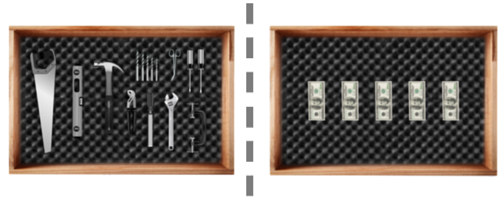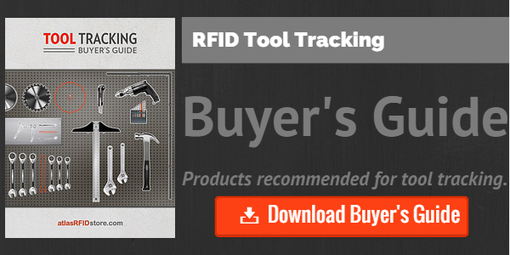Protecting Your Tools With RFID
Introduction
Thousands of tools worth thousands of dollars are stored on the shelves of hospitals, manufacturing plants, and construction yards, yet many of these tools lack any organization, security, or tracking methods. While RFID can be a considerable, upfront investment, it can help protect a company’s assets. Where some people see a box full of tools, others see a box full of company money with no security measures present.

How to Track Tools
Tracking tools with RFID requires adhering RFID tags to each utensil in order to maintain and manage hundreds or thousands of tools and minimize loss and replacement. When each tool is tagged and hardware and software components are setup correctly, the user can have visibility into inventory rooms, tool cribs, and even mobile tool boxes. Construction, healthcare, manufacturing, or any industry or company with thousands of tools on hand could benefit from RFID tool tracking.
In order to successfully track these tools, both hardware and software are required. Tags, readers, antennas, cables, and software together create RFID tool tracking systems for use in warehouses, construction yards, sterilization rooms, and trucks. Five common RFID tool tracking systems are mobile inventory systems, tool picking systems, inventory control systems, check in/check out systems, and tool history systems. For a deeper look into the problems that these solve, read Manage Preventative Tool Maintenance with RFID.
Choosing an RFID tag that will yield the best read range is a complex decision, as it is necessary to understand the limitations and restrictions of the tracked tools. Many tags work well for tool tracking applications, but they can be narrowed down depending on the shape and size of the tool. It is also important to understand how these tools will be tagged, whether that means epoxy, embedding, or screws and rivets. For RFID tag options, as well as hardware options, download our Tool Tracking Buyer’s Guide for a better understanding of where to start.

The required RFID hardware differs greatly depending on what type of tool tracking system is being set up on location. Excluding tool picking systems, most RFID tool tracking systems will require a fixed reader and antennas, but whether those pieces are in a portal depends on the environment and specific system. Handheld readers are very useful in all tool tracking systems as the handhelds help identify specifics tools and read/write RFID tags.
Typically, tool tracking setups start at $3,000 - $4,000, but the initial investment can grow quickly depending on the amount of tools being tracked and the required hardware. Spending thousands of dollars upfront can seem costly for some companies, but the return on the investment will usually significantly make up for the costs.
Conclusion
For additional questions about tool tracking with RFID, leave a comment below or contact us for more information.
If you’d like to learn more about all things RFID, check out our website our YouTube channel, or contact us.
To learn more about RFID asset tracking, check out the links below!
- 3 Reasons You Should be Tracking Your Returnable Assets
- 7 Things You Can Track in Hospitals Using RFID

